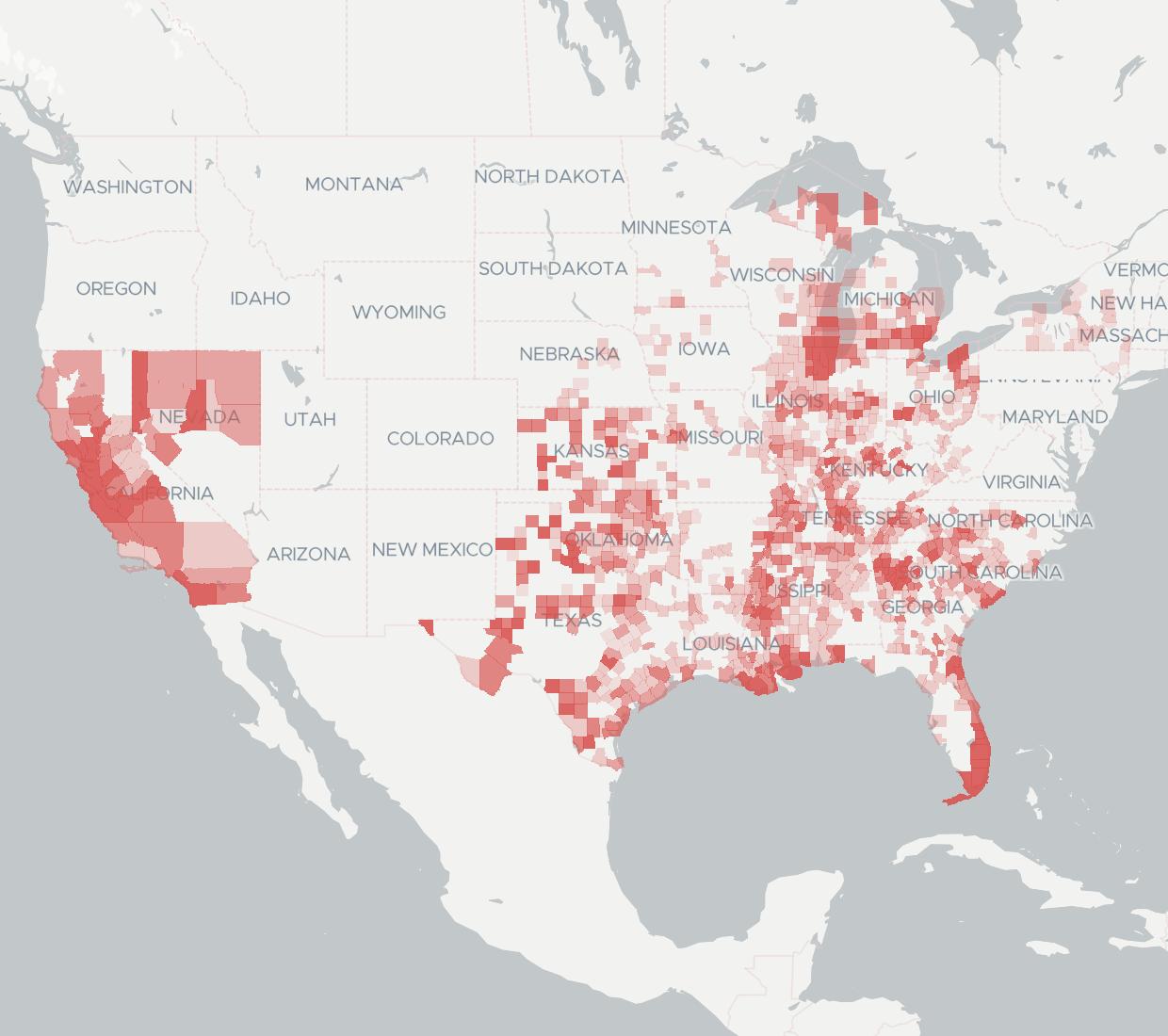EarthLink Internet Availability
Providing coverage to 48 states using a combination of DSL, fiber, satellite, and wireless technologies, EarthLink is available throughout the continental U.S. As the second-largest Digital Subscriber Line (DSL) internet service provider, EarthLink provides service to an estimated 99.2 million people. In addition to DSL broadband, EarthLink also offers fiber internet service that’s available to approximately 33.4 million people, making it the third-largest provider of fiber broadband in the U.S. by coverage area.
EarthLink Internet Services
| Best features | Things to consider |
|---|---|
|
|
The pricing for EarthLink’s internet service varies based on the connection type. That said, EarthLink Fiber is similar in price to many competitors in the market. EarthLink Fiber pricing starts at $54.95 per month.
| Plan name | Download speeds | Starting price | Data caps |
|---|---|---|---|
| EarthLink Fiber | Up to 5 Gbps | $54.95 per month | Unlimited data |
| EarthLink Wireless Home Internet | Up to 100 Mbps | $39.95 per month | Up to 300 GB |
When compared to other fiber providers, EarthLink Fiber is neither the most expensive nor the cheapest. However, when compared to other widely available internet types, such as cable, DSL, or satellite internet, EarthLink Fiber can give customers a significant discount per Mbps.
EarthLink Internet Speeds
For EarthLink customers, DSL is widely available as it was historically their main internet connection type. It can be expensive and can take a while to roll out fiber networks to individual homes. If EarthLink doesn’t yet offer fiber in your area, it should be just a matter of time. In fact, EarthLink piggybacks AT&T’s DSL and fiber network, meaning they offer the same speeds as AT&T. EarthLink Fiber offers symmetrical speeds up to 5 Gbps.
EarthLink also offers a fixed wireless internet solution called EarthLink Wireless Home Internet. As another option for customers with limited options, this technology operates via signals from cell towers located closest to your home. Whether your network will use 5G or 4G depends on what’s available in your area. Plans work on a data limit basis instead of by speed. Subscribers can choose data plans varying from 100 to 300 GB per month, starting at $39.95 per month.





